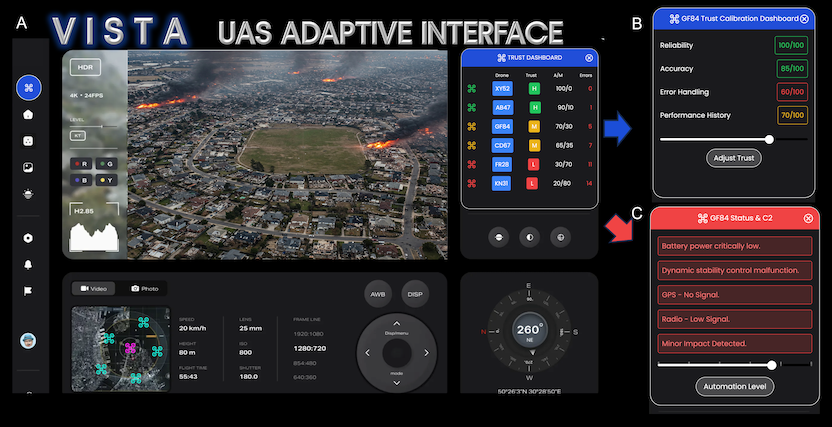Area of Interest (AOI): 6. Autonomy
Innovation: VISTA’s operator-defined trust metrics leverage research on expert decision models to optimally fuse inputs from human experts to create dynamic, interpretable measures of machine trustworthiness. Bi-directional trust is achieved by integrating real-time assessments of the human operator’s cognitive state, utilizing and expanding on algorithms developed under Kairos’s OFRN Round 6 OPTICS project. Additionally, we will leverage our access to Sinclair’s specially configured Beta AAM flight simulator, serving as VISTA’s experimental platform, to develop, test, and evaluate the VISTA UAS Adaptive Trust Interface.
Objectives: VISTA seeks to :(1) develop scientifically grounded algorithms to accurately assess and rapidly calibrate bi-directional trust in human-anatomy teams (HATs) by aligning latent representations and sharing critical knowledge in an adaptive interface; (2) iteratively design, develop, and test our trust calibration interface in a realistic dual-use scenario involving a human-operated Advanced Air Mobility (AAM) platform coordinating with multiple autonomous UAS to perform complex missions.
Background: Initial transition efforts will focus on licensing VISTA as an application for use on existing pilot interactive devices, as well as existing UAS Ground Control Station software and Government Reference Architectures in Collaborative Combat Aircraft for human-autonomy teams (HATs). The U.S. autonomous vehicle market is projected to grow from $22.6 billion in 2024 to $222.8 billion by 2032 – however, public trust in autonomy remains low. Trust calibration thus represents a critical capability gap. Addressing this challenge in high-stakes environments requires scientifically ground metrics for real-time AI trustworthiness derived from operator perspectives. VISTA seeks to address this gap by integrating operator-defined trust metrics with real-time state assessments to deliver actionable insights through an adaptive interface that facilitates appropriate trust calibration, enhancing HAT effectiveness and safety.
